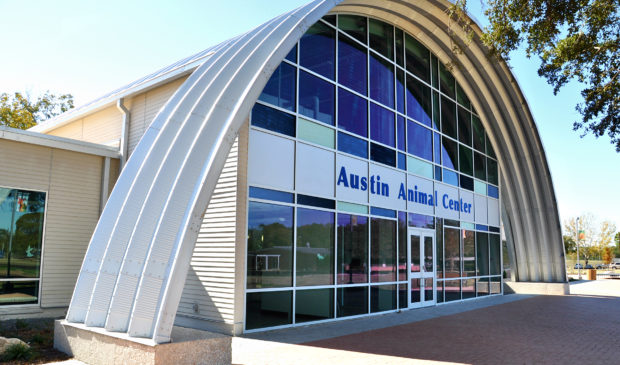Council codifies no-kill practices in controversial ordinance
Friday, October 18, 2019 by
Ryan Thornton City Council approved a set of controversial amendments to city code Thursday, giving legal weight to certain no-kill practices that many community advocates consider harmful to people and pets alike.
Ellen Jefferson, executive director of Austin Pets Alive!, defended the amendments from their detractors, claiming that each of them is reflective of current practice and aligns with recommendations from the city’s 2010 No Kill Implementation Plan.
Ryan Clinton, who is on the board of the city’s Animal Advisory Commission, suggested that “people are just attacking the code amendments because it’s an opportunity to be heard.”
Council Member Natasha Harper-Madison insisted that those individuals are highlighting serious issues, including the negative consequences of an unquestioned no-kill policy.
Residents critiqued the city’s no-kill practices from several angles before Council’s vote Thursday morning. Their arguments did not diminish no-kill, but focused on how such a rigid policy can produce inhumane outcomes.
For the better part of a decade, the Austin Animal Center has saved over 90 percent of the animals it has taken in, making Austin the most “lifesaving” city in the nation for the past five years. With its partnership with Austin Pets Alive!, the center saved 97 percent of animals in the most recent fiscal year.
Local resident Wendy Murphy said those impressive numbers are misleading as they indicate only an animal’s condition upon leaving the shelter, ignoring health and life span from that point forward.
Shelly Leibham, a local business owner and cat volunteer at Austin Animal Center, said the numbers are particularly deceptive in relation to the center’s shelter-neuter-return program. After being spayed or neutered at the shelter, cats and kittens are returned to the neighborhood where they were found, even if the locations are near high-traffic intersections or commercial sites.
The shelter-neuter-return program, or SNR, was adopted in 2011 as an alternative to euthanasia for cats and kittens that are not reclaimed. The program is generally meant for cats over six months old, but accepts kittens as young as three months if the kitten is healthy, weighs at least three pounds and has not been declawed. According to Leibham, over 150 kittens younger than six months have gone through the program this year.
Earlier this month, Chief Animal Services Officer Don Bland said in a letter that these kittens are well-suited for outdoor environments and that, despite concern from the community, they will “thrive to become adults.”
Acknowledging those worries, however, Animal Advisory Commission member Craig Nazor proposed dealing with cats and kittens in a separate set of amendments. Pressing the issue further, resident Julie Marquis urged Council to amend the ordinance with language excluding kittens under six months old from the shelter-neuter-return program.
Several residents also took exception to a section of the ordinance that prohibits performing euthanasia in shelters without providing a two-day minimum notice to rescue organizations and the owner or finder who surrendered the animal, giving them an opportunity to take possession of the animal instead.
Local animal advocate Pat Valls-Trelles said the language could be interpreted to mean that the city is dictating what veterinarians can do and when, putting them in the position of choosing between their professional code of ethics or city code.
She suggested postponing the item until the issue could be sorted out with consideration of a recent letter by Stephanie Beardsley, a veterinarian at Central Texas Veterinary Specialty and Emergency Hospital.
The hospital has treated over 800 pets in 2019 alone, in some cases involving euthanasia. Beardsley said that if the city wishes to impose such restrictions, it will also need to choose where to send those animals in the future.
“If we as veterinarians do not have the right to make those decisions on site and we have to watch patients suffer unduly because of a ‘no kill clause,’ then we will no longer be able to provide services for the city of Austin or the Austin Animal Center,” Beardsley stated in the letter.
Speaking on the behalf of Sandra Muller, animal advocate Liz Carrasco also criticized the euthanasia proposal for its restrictive provisions, which only make exception for animals who are irremediably suffering or for dogs with a history of unprovoked biting that resulted in a severe injury to a human. Reserving euthanasia only for dogs who have already caused a “severe” injury, she said, allows dogs with bite histories back into the community where they may do further harm.
Moving for approval of the ordinance, Council Member Leslie Pool said she appreciated the various concerns raised, even those that were outside of the proposed revised ordinance in scope. “What this means is that our work continues.”
Council passed the ordinance 8-2, with Council members Pio Renteria and Harper-Madison opposed and Kathie Tovo absent for the vote.
“We need to recognize no-kill as an ongoing responsibility and not a feel-good label,” Harper-Madison said.
This story has been changed since publication to correct the vote tally. Photo by SteelMaster Buildings made available through a Creative Commons license.
The Austin Monitor’s work is made possible by donations from the community. Though our reporting covers donors from time to time, we are careful to keep business and editorial efforts separate while maintaining transparency. A complete list of donors is available here, and our code of ethics is explained here.
You're a community leader
And we’re honored you look to us for serious, in-depth news. You know a strong community needs local and dedicated watchdog reporting. We’re here for you and that won’t change. Now will you take the powerful next step and support our nonprofit news organization?








